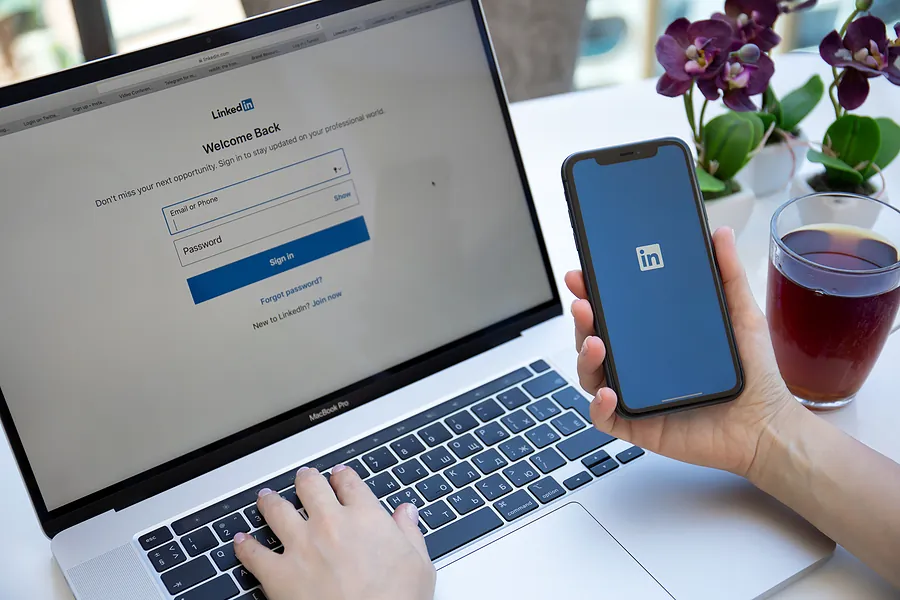Social Selling Via LinkedIn

Is your LinkedIn social selling strategy based on FOMO (the fear of missing out)? FOMO is rarely a good reason to do anything in business. Especially if we are talking about social selling on LinkedIn. We all agree exposure on LinkedIn is important, but there can be a negative impact without a clear social selling strategy. Implementing a social selling policy should be the first step of any social selling program. In this article, we will outline what a Social Selling policy is, what it should include, and what advantages you can gain by implementing a formal strategy.
A social selling policy is a guideline that outlines how an organization and its team members should conduct themselves on LinkedIn. It should include the roles and responsibilities of each employee. If you want your team to represent your organization professionally and enthusiastically, you should provide guidelines and encourage the team to participate socially.
Since its launch in 2003, LinkedIn has grown to over 774 million users worldwide. What started out as a social job platform for professional networking has turned into an all-encompassing content platform for business. Since its acquisition by Microsoft in 2016, it has evolved into the go-to-platform for sales professionals.
Salespeople can connect with prospects, research customers, and get notified of job changes and company updates. In many instances a prospect will update their LinkedIn profile before the company updates the staff page on their website. Updated data is critical for sales success. Nothing worse than calling a prospect from your CRM and hearing, “They do not work here any longer.” That is an awkward call that could be avoided by having a social selling best practice which includes reviewing the prospect’s LinkedIn profile prior to the call.
As great a tool LinkedIn is for sales professionals, there are hazards companies need to be aware of. For example, employees can abuse social medial and negatively impact the firm’s brand image. What employees share on LinkedIn can be viewed as a direct reflection of the company and your brand. You also don’t want members of your sales force disclosing sensitive information, or worse, talk negatively about competitors in an open forum. It’s akin to giving the keys of the family car to a teenager without any driver education. Just because you can, doesn’t mean you should.
Salespeople should be educated and trained how to use LinkedIn to their advantage. Like any tool, there is the right way, the wrong way, and the best way. This can open their eyes to new possibilities and increase their willingness to participate in ways that benefit the company as well as themselves. As a training company, we realize adults are competency-based learners. That means adults become willing to learn something new when they see it will have an immediate and positive effect on their life. Having an effective LinkedIn strategy is less about telling your salespeople what not to do, and more about showing them what to do to improve everyone’s outcomes.
Network and Share Relevant Content
To oversimplify LinkedIn, there are two components—one for networking and one for sharing relevant content. As salespeople, we want to connect with like-minded professionals that fit the profile of what our ideal prospect looks like. But we also want to connect with people and thought leaders whose content shows up in your feed. For example, if you sell insurance in the United States, you likely don’t want your network to be freelance graphic designers in Lithuania. We want the content to be of the highest value possible. This seems straight forward but we often see clients with larger audiences but very little value to their specific industry.
Content is the second component of a well-established LinkedIn strategy. Providing guidelines on what content your team can share is a wise move. For example, what information is confidential, such as pricing or a current client list, and what information can be openly shared. Ensure your team understands your strategy and give them guidelines to follow.
Some elements of a LinkedIn Social Selling guidelines could include:
- Roles. Designate someone within your marketing or communications team to post on behalf of the company and have the sales team share the official content. Make it clear that only official content can speak on behalf of the company. If the employee is going to make personal posts, ensure they make it clear their opinions are their own.
- Unacceptable Content. Prohibit online spats about the company and inflammatory or disrespectful language about competitors or coworkers. Employees must understand they are responsible for upholding the company’s values in their social media communications.
- Copyright Infringement. Make sure your employees are aware of the kinds of content they can and cannot post per copyright regulations.
Again, this is an oversimplified list, but understand that your team represents your company and brand on LinkedIn. You do not want random profile descriptions, misspelled words and inflammatory language broadcasted to your LinkedIn audience. Including a section on social media protocols in your employee handbook is a common best practice today. Giving your team a copy-and-paste job and company description for their profile should also be a consideration.
The Premature Sales Pitch
Another problem many of us encounter frequently is the premature sales pitch via LinkedIn. How many times in the last 30 days have you accepted a connection request only to receive a message like this 5 minutes later: “Thanks for connecting. I have a great new solution I think you will love. Do you have time to hop on a quick call?”
Of course, being in the sales training business, I use this as a training opportunity, but for most of us, this can be very annoying. The purpose of social selling is not to spam connections with unsolicited offers. If you are deliberate with your connections you want to nurture them before you jump right into a sales pitch. A good rule of thumb is never go for the appointment in your first or second message. You want your team to avoid the premature pitch at all costs.
Think about this from your prospect’s point of view. When your first communication is a sales pitch, you are destroying any and all rapport you might have had with the new connection. It’s like that obnoxious person at the gym who gives unsolicited workout tips and supplement advice because you climbed on the machine next to them. You only have to experience that once and you avoid that person at all cost in the future. That is the impact of the premature pitch to new connections on LinkedIn.
The reality is there are only two types of people on LinkedIn. Those that spend time and those that invest time. The goal is to have your sales team’s time be invested wisely. You do not want to leave the social selling strategy up to the individual salesperson. Like any other skills training, some sales managers view social selling training as an interference to real “selling.” But the more proactive you are in providing your team with the tools, skills, and knowledge to leverage LinkedIn to their advantage, the better it is for your sales organization as well.
This guide is only the starting point to develop a foundation to create an effective LinkedIn strategy. Social selling as a tool can be valuable for everyone in sales. The companies that conduct the best social selling training will be the companies that own the future. But like everything in sales, social selling should not be overlooked. With consistent training, you can raise the bar of your team’s performance on LinkedIn. If you really want your team to be the top in your industry don’t leave social selling to chance.
Comments are closed.

- Account Planning (11)
- Awards (50)
- Client Testimonial (37)
- Personal Branding (19)
- Podcast (11)
- Research (68)
- Sales Career Development (85)
- Sales Coaching (153)
- Sales Consulting (133)
- Sales Culture (164)
- Sales Enablement (340)
- Sales Leadership (108)
- Sales Management (242)
- Sales Negotiation (16)
- Sales Prospecting (124)
- Sales Role-Playing (18)
- Sales Training (229)
- Selling Strategies (255)
- Soft Skills (67)
- Talent Management (92)
- Trusted Advisor (27)
- Virtual Selling (41)
- Webinar (10)





























Nice post. Good thoughts
Thank you Rogerio!